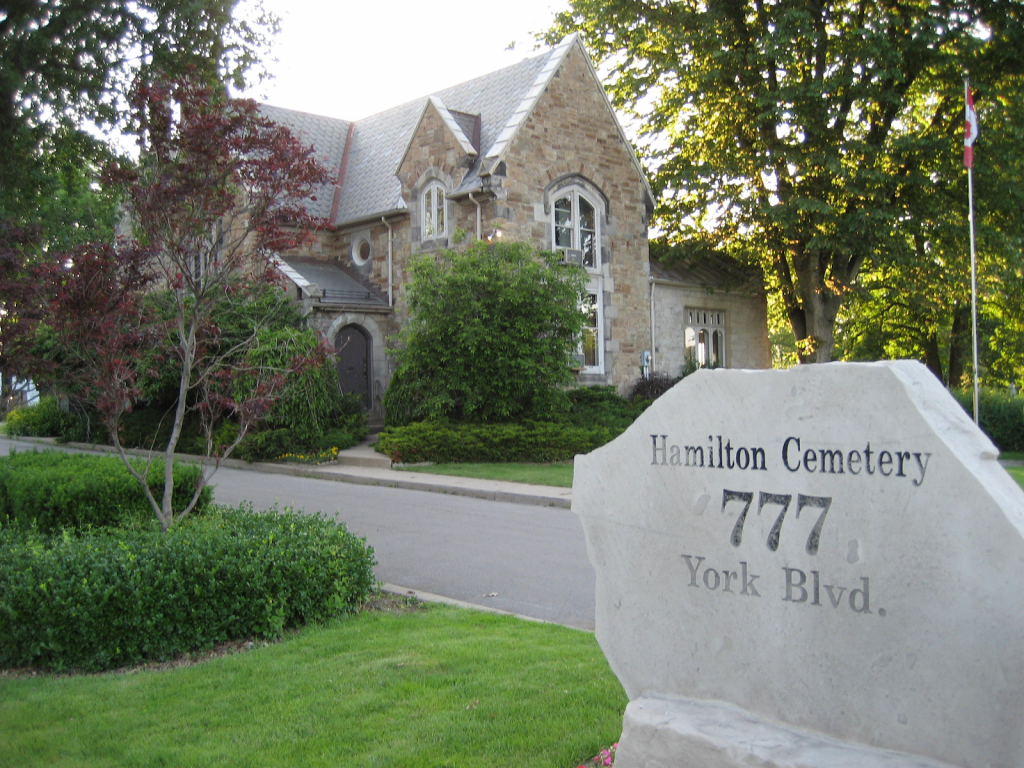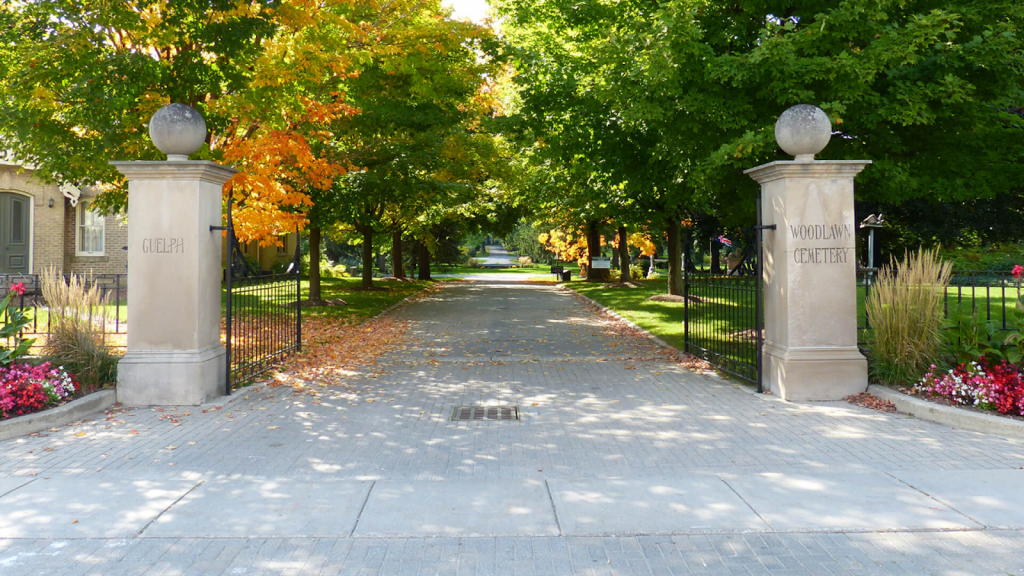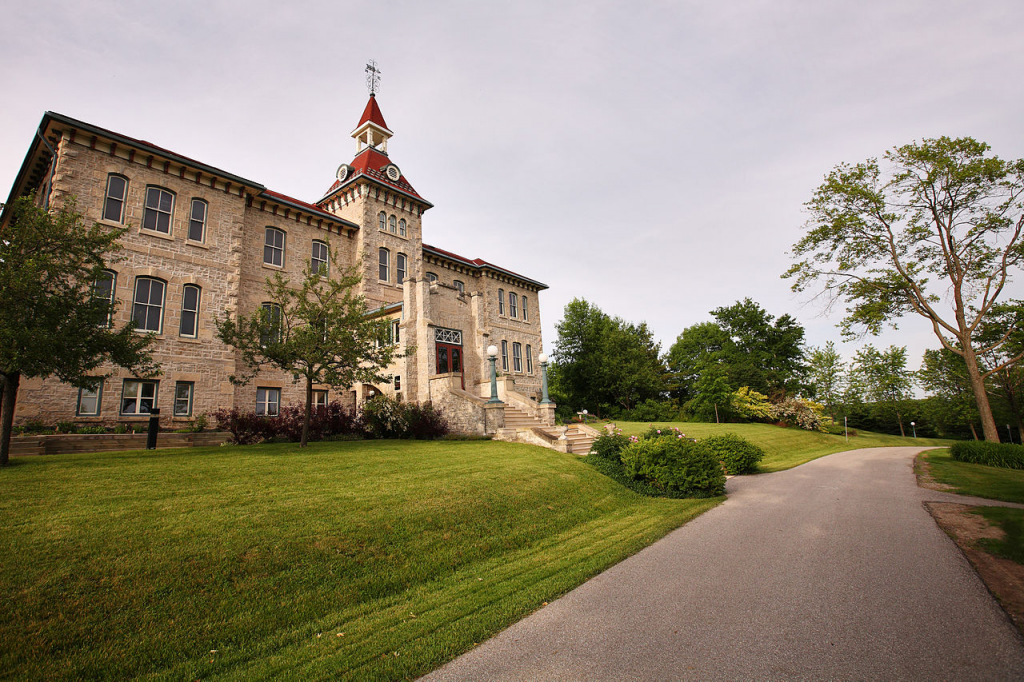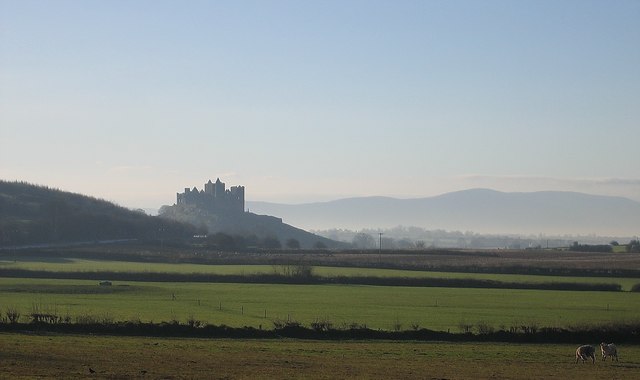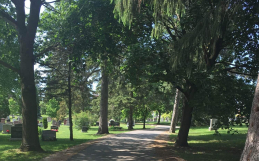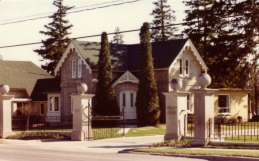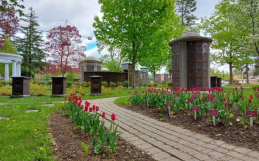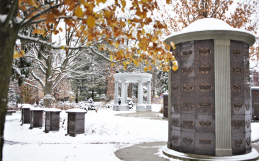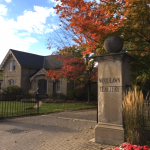The following is a blog, reposted with permission, from the website of Sue Phillips, an end of life doula in the Hamilton-Wentworth area. Click here to visit Sue’s website.
For many years, I’ve been fascinated by cemeteries and, after some reflection on why this might be, I suppose my interest stems from a feeling of connectedness towards the people who are interred within them.
When visiting a cemetery, I allow myself to simply stroll about, without a clear direction or destination in mind, until I feel drawn to a particular headstone, at which point I will spend a few minutes reflecting on and honouring the lives of those named there.
I strongly believe that we are all connected in some way and feel a sort of responsibility to recognize, acknowledge, and honour those who have left this place and the footprint they have left behind. In addition to memorializing those who have passed, cemeteries are able to preserve their history and, for those who have the patience to examine that history, to tell a story in a way that is entirely their own. There is no shortage of examples of the types of stories that might be found by those who are interested, and I need look no further than my own backyard to experience this.
Hamilton Cemetery
Courtesy: Wikipedia
Hamilton Cemetery is the oldest municipal cemetery in Canada and is home to over 75,000 headstones. While it may not be evident on a cursory examination, there is a rich story to be found here, dating all the way back to the American Revolution and the War of 1812.
The Land family vault, for example, tells the story of a family torn apart by British and American loyalties, only to be reunited in Hamilton. Local historian Robin McKee, who regularly leads a guided tour through the cemetery, brings this story to life, detailing the tribulations of Robert Land Sr., who was tried as a traitor after his involvement in British espionage missions in New York.
Despite a later appeal directly to George Washington, Land’s home was burned down by locals. He assumed his wife and children had perished in the fire before he fled to America and made his way to the Hamilton lakeshore in 1782. What Land didn’t know was that his family was not present when their home was set ablaze. After the incident, Robert’s wife, Phoebe, and children sought British protection in New York, then in New Brunswick, before catching wind that her husband may, in fact, be alive. Phoebe and their children eventually reached Niagara, where they heard of a man named Land who had settled on a large bay at the head of Lake Ontario. In 1791, in what must have been a huge leap of faith, the family walked nearly 70km to Hamilton where Phoebe and Robert were reunited after nine years.
We could also look at the headstones of James and Mary Gage, whose farmstead played host to the Battle of Stoney Creek in June of 1813. This is thought to be the decisive battle that stopped further American advances into Canada. During an overnight raid, around 700 British soldiers, local militiamen, and Iroquois warriors who were camped on the current site of the Hamilton Cemetery, then known as Burlington Heights, managed to reroute a force of American soldiers back towards the Niagara region at bayonet point. Since that night, no American force has ever made its way that deep into Canadian territory.
The headstone of George Hamilton, the city’s founder and namesake can also be found in Hamilton Cemetery. As the War of 1812 came to its end, Hamilton purchased 250 acres of land along the Burlington Bay, despite reluctance from the government of Upper Canada to establish any government administration offices in the Niagara region, so close to the American border. The land he purchased eventually grew into the City of Hamilton, which is now home to nearly 580,000 people.
One final story worth mentioning here, though it’s certainly not the last to be found within the cemetery, is that of Nelson Stevens. Stevens was a slave who followed the Underground Railroad from the Southern United States to freedom in Canada, but chose to go back to America to serve in the army when the Civil War broke out. Stevens survived the war and eventually came back to Canada where he lived a long life — however, when he died, he was buried in an unmarked grave. When Robin McKee, the local historian mentioned earlier, learned of this story, he was determined to find Stevens’ burial site, which, incredibly, he did. Since then, he has been issued an honorary headstone by the US Army which denotes his rank as corporal.
Wellington County
Woodlawn Memorial Park
The City of Guelph plays home to Woodlawn Memorial Park, another local historical site of note which provides a beautiful setting in which we can remember those who have left us. The Woodlawn Cemetery, the largest in Wellington County, opened its gates in 1854 after the City of Guelph passed a By-law that banned human burials within the city limits. This forced the three cemeteries located within the city to close and move those interred there to new locations around 3km away from the city, which was considered to be a great distance at the time. The Memorial Park now contains several notable, commemorative monuments, including the Children’s Memorial Garden, the Peace Pole Garden, and the University of Guelph Commemorative Garden.
The Children’s Memorial Garden began as a vault, constructed in 1921 between the borders of two older areas of the park, that was meant to house the remains of very young or stillborn children. However, at the time, no means of commemorating those children was established. The monument and garden, as they stand today, were dedicated in October 1997, after extensive research revealed that more than 900 children had been buried there throughout the years.
Woodlawn Memorial Park is the only cemetery in Canada that sits along the Trans Canada Trail: A system of greenways, waterways, and roadways covering over 24,000km and stretching from the Atlantic to the Pacific to the Arctic oceans. The north entrance of the trail in Woodlawn is marked by a 7’ high, granite Peace Pole displaying the message “May Peace Prevail on Earth” in 18 different languages. It is one of over 100,000 such peace poles in the world and was planted with the intention to link people across Canada in the spirit of preservation and love for our country.
The University of Guelph Commemorative Garden sits in the U of G Medical Sciences plot and was first dedicated in 1968, the monument bearing the University’s coat of arms and the message “Although we know not of their station in life, it is with respect and reverence that we share their final contribution of the advancement of Medical Science.” In 2004, the current garden was designed and planted by volunteers from the university. This site is the final resting place for around 170 people who had donated their bodies to science.
Wellington County House of Industry and Refuge
Courtesy: Wikipedia
On a drive with my mother one day, we went on an adventure to visit The Poor House in Wellington County. The term “poor house” was something I was familiar with, as I heard it when I was a kid — if they aren’t careful with their money they will end up in the poor house — but I had no idea what to expect of this site based on that.
What I learned later in life, was that The Wellington County House of Industry and Refuge is the oldest surviving state-supported poorhouse in Canada. It was originally constructed in 1877 and operated as a poorhouse and farm until 1947, then as an old age home until 1971. In the 1980s, the building was repurposed to house the Wellington County Museum and Archives. The site was designated a National Historic Site of Canada in 1995 based on its illustration of 19th century attitudes towards poverty and the origins of Canada’s social safety net.
At the edge of the property, a one-acre cemetery was established for those who had no family to claim their remains at death — there are 271 men, women, and children buried here. These individuals had no one who claimed them at the end of their lives and their existence was not noted at the time. In 1950, people were no longer being buried at this site and a large bunch of pine trees was planted. Most markers were destroyed and, after 50 years, the site was cleared and a memorial was erected, including interpretive signs that provide detail on the people who lived and were buried there.
I honour those people who passed on at the Wellington County House of Refuge / Poor House.
Cemeteries Abroad
Courtesy: Geograph Ireland / County Tipperary, Ireland
I had the privilege of being able to travel to Ireland in 2013 for a yoga learning retreat. Knowing that I had an Irish family background, I started asking questions and, fortunately, my Uncle Larry had some great information that led me to be able to visit the very village my Murphy family is from, in Tralee, County Tipperary.
Exploration in the village took us to the very street where my great grandparents lived before coming to Canada, and just down the street was the local cemetery. Of course I had to visit! I was not able to find any burial spots that were related to my family members but Murphy is a fairly common name in Ireland and, nonetheless, I was overwhelmed and emotional to know I was in the place of my ancestors, and, of course, very intrigued by the nature of the headstones and memorials, many of them run down and crumbling.
Throughout my life, I have traveled a great deal and always make a point of visiting cemeteries, including some in India, Germany, and Poland. It will always be part of what I want to do — pay my respects to those interred there, honour their history, and reflect on their stories in a way that I may not have been able to otherwise, even when those stories take a little patience and dedication to uncover.
A note to Sue Phillips by Paul Taylor
Thank you, Sue, for a wonderful journey through your eyes to four historic Cemeteries.
I have had the pleasure of visiting Hamilton Cemetery on many occasions for business and pleasure with the Ontario Association of Cemeteries (OAC), during my years as President of that great organization. Hamilton Cemetery has a deep connection to the OAC, starting in1913 when the inaugural meeting of the OAC was held there. The following words were spoken by W.H. Foord, the first President of the Association of the Cemetery Officials of Canada:
“Pride in his profession and aim for improvement will cause every Superintendent and Cemetery Official to reach out for knowledge and we trust this Association will be the school to furnish such to them.”
For over 100 years, Hamilton Cemetery has played a vital role in educating cemeterians of the honour and privilege there is in taking care of the valuable local history found in cemeteries everywhere.
There is another reason I would travel to Hamilton Cemetery, and that is to visit the grave of William Haskins. He was the City Engineer of Hamilton from 1856 to 1896. The job he held before that long career was as the Secretary/Superintendent of Woodlawn Cemetery in Guelph from 1855 to 1856. He was just starting out, young and ready to work hard in his career designing and laying out the graves in Woodlawn (then known as Guelph Union and St. George’s Cemeteries). His work is important to me because Woodlawn is my backyard. It’s where I have lived for 40 years. I have walked these roads and trails, have thought about Haskins’ early work that he left behind to be seen and enjoyed 166 years later. On these walks, I read many stories carved in stone, imagined what life must have been like and thanked them all for making Guelph what it is today.
I have had the privilege to live with my family in the historic Cemetery Lodge on the grounds of Woodlawn Memorial Park for 40 years. There is no better backyard anywhere. This is reinforced to me every day by seeing hundreds of people that decide to travel to my backyard for a little stroll through history.
Sue, you have done a great job in opening up an opportunity for others to discover the history of any community, anywhere they travel. Every community history lies within the gates of their local Cemetery. On your travels, take the time to discover it.
-Paul Taylor

